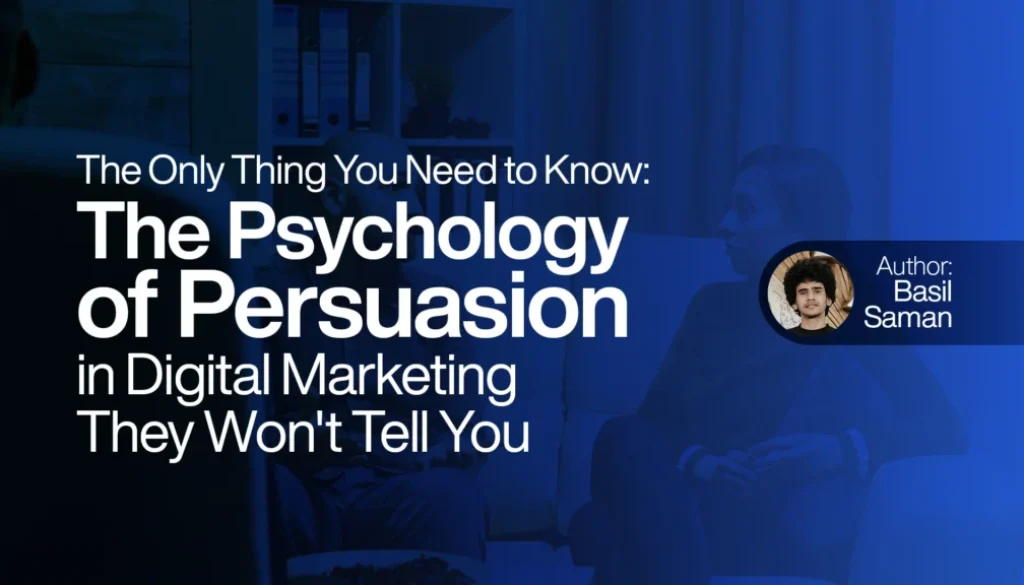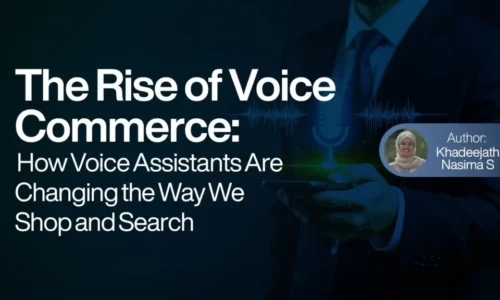The Psychology of Persuasion in Digital Marketing
Digital marketing isn’t just about ads or social media posts. It’s about understanding what makes people take action. That’s where persuasive psychology comes in. If you don’t know this, you’re leaving opportunities on the table. Let’s get straight to it.
Table of Contents
People Want to Feel Understood
Nobody likes being sold to. But everyone likes being heard. When your marketing speaks directly to someone’s needs or pain points, they’ll pay attention. Use simple language. Avoid jargon. Just show that you get it.
Example:
Don’t say, “Our product optimizes operational workflows.”
Say, “We make your work easier.”
Make it about them, not you.
Emotions Drive Decisions
Logic is important, but emotions seal the deal. People often justify decisions with logic after their emotions have made the choice. Tap into this.
Ask yourself:
Does this ad make someone feel excited?
Does this email spark curiosity?
Does this post trigger trust?
Craft messages that connect emotionally. Then back them up with facts.
Make Them Curious, Keep Them Hooked
Curiosity drives action. When people are hooked, they can’t resist learning more. A great way to use this in your marketing is by creating a sense of mystery or holding back just enough information to spark interest.
For example:
Instead of: “Our tool saves time by automating tasks.”
Say, “Discover the secret to getting 2 extra hours every day.”
Curiosity pulls people in. But always deliver on the promise—disappointed curiosity can hurt trust. Keep your audience guessing, but reward their curiosity with value.
Scarcity and Urgency Work—But Don’t Overdo It
“Limited time only” and “only 3 left” work because they create a fear of missing out (FOMO). But be honest. Fake urgency kills trust.
Use these strategies sparingly. Make sure that the scarcity or urgency is genuine. For example:
A real countdown timer for a sale.
Genuine limited stock on a product.
Trust beats short-term gains.
Social Proof Builds Confidence
People trust what others trust. That’s why reviews, testimonials, and case studies are so powerful. If others like it, new customers are more likely to give it a try.
Make it easy for people to see your social proof. Highlight real customer feedback and results. Avoid overly polished or exaggerated claims.
Simplicity Wins
Too much information overwhelms people. Keep your messaging clear and simple. Tell them what they need to know—and nothing more.
For example:
Instead of: “Our innovative platform delivers unparalleled efficiency in task management and productivity optimisation.”
Say, “We help you get the best results in less time.”
Clarity builds trust.
People Trust What They See
If your audience can see how others use your product, they’ll feel more comfortable with it. Don’t just tell them; show them. It’s about building trust and confidence.
For instance, share success stories. Show how your product helped others solve real problems. This approach works better than simply listing features. Consistency in messaging is key. Keep your tone and messaging the same across all platforms. This helps build a stronger, recognisable brand that people can trust.
Actionable Steps Close the Deal
Once you’ve got someone’s attention, tell them what to do next. Be clear and specific:
“Click here to get started.”
“Call us today.”
“Sign up for free.”
Make sure your call-to-action (CTA) is easy to follow. Don’t confuse them with too many choices.
Conclusion
The psychology of persuasion isn’t a secret, but it’s often overlooked. Speak to emotions, build trust, and keep it simple. That’s what works. And it’s not about manipulating people—it’s about connecting with them. Understand what your audience needs. Show them you care. And guide them toward action. That’s the only thing you need to know to succeed in digital marketing.
Author Info
Basil Saman, a digital marketing strategist in Malappuram.
Learner of CDA Online Digital Marketing Courses.



